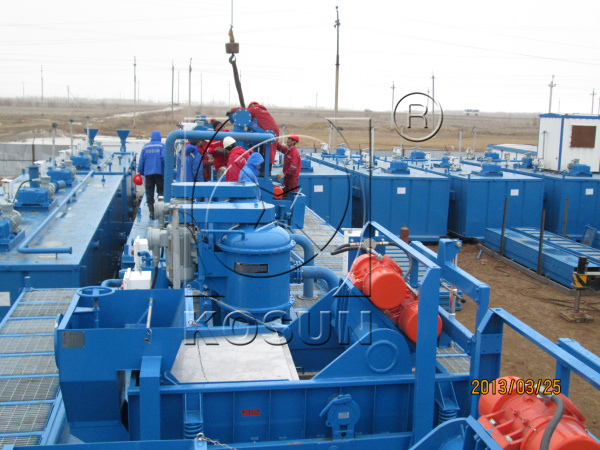Nov 12, 2013
The drill bit, aided by the weight of thick walled pipes called "drill collars" above it, cuts into the rock. There are different types of drill bit; some cause the rock to disintegrate by compressive failure, while others shear slices off the rock as the bit turns.
Drilling fluids, a.k.a. "mud", is pumped down the inside of the drill pipe and exits at the drill bit. Drilling mud is a complex mixture of fluids, solids and chemicals that must be carefully tailored to provide the correct physical and chemical characteristics required to safely drill the well. Particular functions of the drilling mud include cooling the bit, lifting rock cuttings to the surface, preventing destabilisation of the rock in the wellbore walls and overcoming the pressure of fluids inside the rock so that these fluids do not enter the wellbore.

The generated rock "cuttings" are swept up by the drilling fluids as it circulates back to surface outside the drill pipe. The fluids then goes through "shakers" which strain the cuttings from the good fluid which is returned to the pit. Watching for abnormalities in the returning cuttings and monitoring pit volume or rate of returning fluids are imperative to catch "kicks" early. A "kick" means, when the formation pressure at the depth of the bit is more than the hydrostatic head of the mud above, which if not controlled temporarily by closing the blowout preventers and ultimately by increasing the density of the drilling fluid would allow formation fluids and mud to come up through the annulus uncontrollably.
The pipe or drill string to which the bit is attached is gradually lengthened as the well gets deeper by screwing in additional 30-foot (9 m) sections or "joints" of pipe under the kelly or topdrive at the surface. This process is called making a connection, or "tripping". Joints can be combined for more efficient tripping when pulling out of the whole by creating stands of multiple joints. A conventional triple, for example, would pull pipe out of the hole three joints at a time and stack them in the derrick. Many modern rigs, called "super singles," trip pipe one at a time, laying it out on racks as they go.
This process is all facilitated by a drilling rig which contains all necessary equipment to circulate the drilling fluids, hoist and turn the pipe, control downhole, remove cuttings from the drilling fluids, and generate on-site power for these operations. Thus, it comes down to solids control equipment. Solids control equipment are a series of equipment to treat the solids particles from drilling fluids, so that drilling fluids can be recycled and satisfy the requirement under the drilling operation again, and assist the drilling bit to enter into the normal work.
In drilling, solids control equipment is indispensable as well as drilling fluids. KOSUN has been exclusively handling oil & gas drilling fluids solids control equipment and solids control system for more than 20 years, as well as varieties of chemical agent, such as shale shaker, decanter centrifuge, desander, vacuum degasser, mud gun, desilter, mud agitator, electrical ignition device, mud cleaner, centrifugal pump, mud tank, mud agitator, etc.